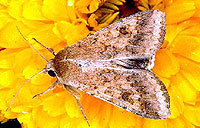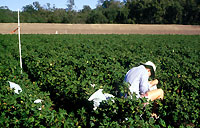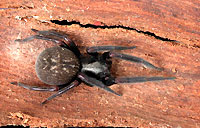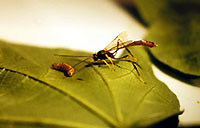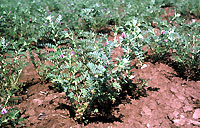| Entomology Home |

an overview
of biological control research in CSIRO Entomology
| Biological Control Home | ||
|
|
||
| Aquatic Weeds » | ||
|
|
||
|
|
||
| Biopesticides | ||
| Entomology Home | ||
| Biological Control Home > Conservation biocontrol > Native species |
Conservation biocontrol - using existing beneficials
Pest management in cotton is increasingly making use of beneficial insects and research is identifying critical habitats, resources needed to maintain them and ways of encouraging their activity. Eggs, larvae and pupae of Helicoverpa moths, the main insect pests of cotton, are all attacked. Groups of neighbouring cotton farmers are working together to implement Integrated Pest Management (IPM) practices and so reduce their use of broad-spectrum pesticides. This will help conserve and encourage beneficial insects and spiders. Transgenic cotton producing toxic proteins from the bacterium, Bacillus thuringiensis (Bt) is now widely used to help control Helicoverpa, but it is possible the moths could become resistant. Refuge crops (with no Bt) are grown with the transgenic cotton to produce large numbers of susceptible moths and so help to reduce the risk of resistance developing. These crops, along with trap crops which are grown to lure Helicoverpa away from cotton, could be useful sources of beneficial insects. Recent research has demonstrated that parasitic wasps can cause significant mortality to Helicoverpa, that their populations are high in early- and mid-season legumes, and it may be possible to augment their populations using the right type of on-farm crop diversity. Supported
by: Australian Cotton Cooperative Research Centre,
|

